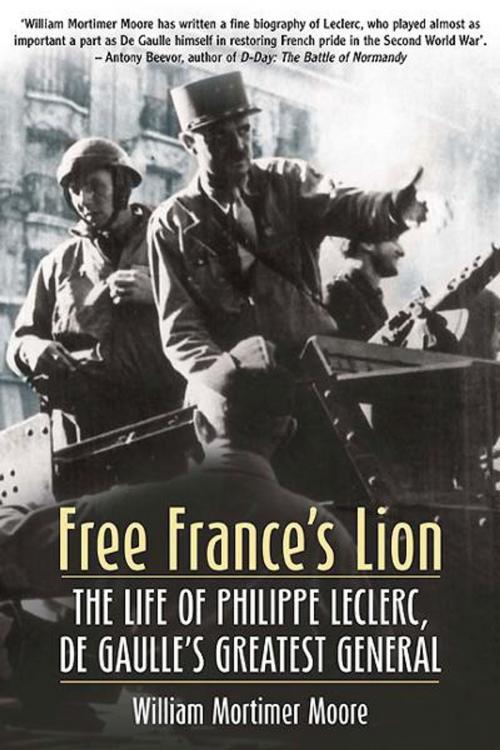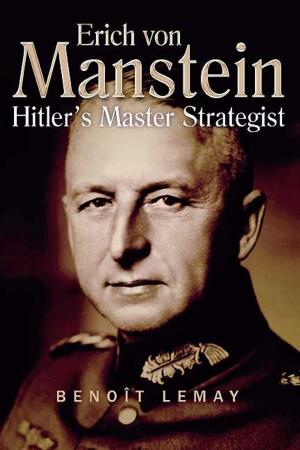Free France's Lion
The Life of Philippe Leclerc, de Gaulle’s Greatest General
Nonfiction, History, Military, World War II| Author: | William Moore | ISBN: | 9781612000800 |
| Publisher: | Casemate | Publication: | November 19, 2011 |
| Imprint: | Casemate | Language: | English |
| Author: | William Moore |
| ISBN: | 9781612000800 |
| Publisher: | Casemate |
| Publication: | November 19, 2011 |
| Imprint: | Casemate |
| Language: | English |
But for his early death, many Frenchmen believe Leclerc would have been their greatest figure to emerge from World War II. De Gaulle himself admitted to his son-in-law that he gave up smoking when Leclerc died, in order to retain his health in case France needed him, because Leclerc was no longer there.
From the fall of France until 1943, Leclerc dovetailed his operations with the British effort in North Africa, establishing himself as a dynamic combat leader in the battles against Rommel. But once the conflict shifted to European soil he became even more prominent as the commander of the 2nd French Armored Division (the famous 2e DB). For the next two years he was under the operational control of either Patton's Third Army, as in the Normandy breakout, Hodges' First Army, at the Westwall, or Patch's Seventh Army in the south.
His career not only includes the liberation of Paris, for which he is most famous, but the retaking of Strasbourg and the reduction of the Colmar Pocket. Helping to spearhead the advance into Germany itself, Leclerc’s armor comprised a rock upon which American units could rely, and its waving the tricolor during the Allied counter-invasion went far toward retrieving French prestige in the war. By the German surrender in May 1945, Leclerc is one of very few Frenchmen of whom it can be said that he never stopped fighting to regain France's freedom, from the debacle of 1940 right through to the end.
After VE-Day Leclerc was dispatched to reassert French authority in Indo-China, an uphill task given the atrophy suffered by the French colonial government due to its isolation from its homeland and local Japanese superiority. While being partly successful in the south and Cambodia, Leclerc soon discovered that the Viet Minh were harder to dislodge in the North, and that Ho Chi Minh was more than a match for frequently changing postwar French governments. Recognizing that France had neither the means nor the will to recover control, Leclerc advised his government to "negotiate at all costs." This didn't happen, leading to Dien Bien Phu eight years later and thence to US involvement.
Surprisingly, Leclerc has never yet been the subject of a thorough biography in English. Nevertheless many Americans and Englishmen will inevitably have noticed the plethora of monuments to Leclerc in any moderately sized French town. With a fast-paced narrative covering combat at all levels of command and a foreword by Martin Windrow, author of The Last Valley: Dien Bien Phu and the French Defeat in Vietnam, Free France's Lion will make fascinating reading for any serious student of the full scope of World War II.
But for his early death, many Frenchmen believe Leclerc would have been their greatest figure to emerge from World War II. De Gaulle himself admitted to his son-in-law that he gave up smoking when Leclerc died, in order to retain his health in case France needed him, because Leclerc was no longer there.
From the fall of France until 1943, Leclerc dovetailed his operations with the British effort in North Africa, establishing himself as a dynamic combat leader in the battles against Rommel. But once the conflict shifted to European soil he became even more prominent as the commander of the 2nd French Armored Division (the famous 2e DB). For the next two years he was under the operational control of either Patton's Third Army, as in the Normandy breakout, Hodges' First Army, at the Westwall, or Patch's Seventh Army in the south.
His career not only includes the liberation of Paris, for which he is most famous, but the retaking of Strasbourg and the reduction of the Colmar Pocket. Helping to spearhead the advance into Germany itself, Leclerc’s armor comprised a rock upon which American units could rely, and its waving the tricolor during the Allied counter-invasion went far toward retrieving French prestige in the war. By the German surrender in May 1945, Leclerc is one of very few Frenchmen of whom it can be said that he never stopped fighting to regain France's freedom, from the debacle of 1940 right through to the end.
After VE-Day Leclerc was dispatched to reassert French authority in Indo-China, an uphill task given the atrophy suffered by the French colonial government due to its isolation from its homeland and local Japanese superiority. While being partly successful in the south and Cambodia, Leclerc soon discovered that the Viet Minh were harder to dislodge in the North, and that Ho Chi Minh was more than a match for frequently changing postwar French governments. Recognizing that France had neither the means nor the will to recover control, Leclerc advised his government to "negotiate at all costs." This didn't happen, leading to Dien Bien Phu eight years later and thence to US involvement.
Surprisingly, Leclerc has never yet been the subject of a thorough biography in English. Nevertheless many Americans and Englishmen will inevitably have noticed the plethora of monuments to Leclerc in any moderately sized French town. With a fast-paced narrative covering combat at all levels of command and a foreword by Martin Windrow, author of The Last Valley: Dien Bien Phu and the French Defeat in Vietnam, Free France's Lion will make fascinating reading for any serious student of the full scope of World War II.















